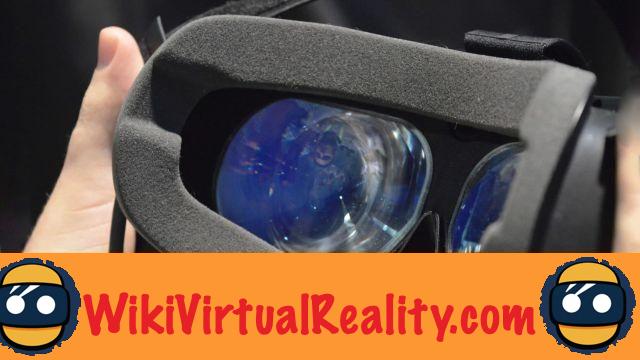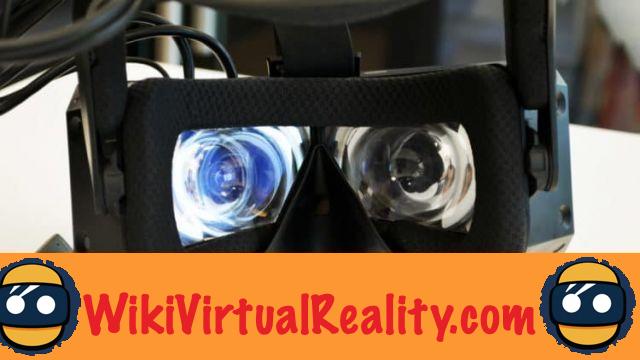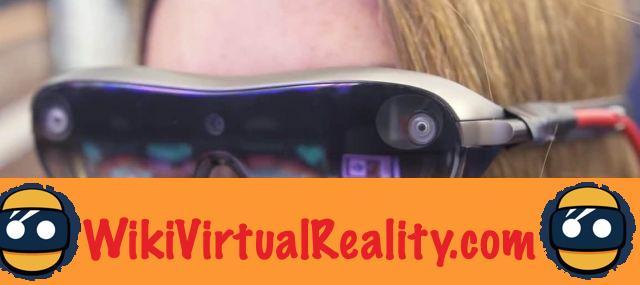
Summary
- StarVR One vs Pimax 8K: screen definition
- StarVR One vs Pimax 8K : champ de vision FOV
- StarVR One vs Pimax 8K: refresh rate
- StarVR One vs Pimax 8K: tracking system
- StarVR One vs Pimax 8K: PC technical specifications
- StarVR One vs Pimax 8K: price and release date
- StarVR One vs Pimax 8K : verdict
Since 2016, the two main market leaders in PC VR headsets are the Oculus Rift and the HTC Vive. However, time has passed since the launch of these devices. Almost two years later, new devices with superior technical characteristics are finally available.
The Pimax 8K from the Chinese Pimax VR and the StarVR One from Starbreeze and Acer both offer screen definition and a field of view far superior to those of the Rift and Vive. Of course, the prices for these devices and the PC needed to use them are high. These are not products intended for the general public, but rather for the most demanding companies or gamers. However, the time has come to decide between these two VR headsets to know which is the best of 2018.
StarVR One vs Pimax 8K: screen definition

Le StarVR One offers a screen resolution of 1830 × 1464 per eye, for a total of 3660 × 1464. It has two AMOLED type screens capable of displaying 16 million sub-pixels.
For its part, the Pimax 8K offers native resolution of 2560 × 1440 per eye. However, thanks to the upscaling technique, this definition is increased to 3840 × 2160 per eye. In total, the number of displayed pixels is 16,6 million. We are therefore approaching 8K, even if we will have to wait for the future Pimax 8KX to benefit from such a definition natively.
In terms of definition, the Pimax 8K therefore embeds it on the StarVR One. Note, however, that Pimax 8K screens are LCD type. In fact, dark images are displayed with a gray tint rather than a dark black tint as is the case with OLED displays like the one on the StarVR One. This can be a real downside.
StarVR One vs Pimax 8K : champ de vision FOV

One of the main advantages of the Pimax 8K and StarVR One over the first generation VR headsets is FOV. The StarVR One offers 210-degree horizontal field of view, and a vertical field of view of 130 degrees. For its part, the Pimax 8K offers 180 degree horizontal field of view. The vertical field of view is not specified, but the diagonal field of view is 200 degrees.
Ainsi, le StarVR One seems to offer a slightly larger FOV. Anyway, these two headsets greatly surpass the Oculus Rift and the HTC Vive on this point. Indeed, these two devices are satisfied with a field of vision of 110 degrees. The visual experience offered by the StarVR One and the Pimax 8K should therefore be closer to human vision, since our horizontal FOV is 220 degrees.
StarVR One vs Pimax 8K: refresh rate
The refresh rate is an important characteristic, since it determines the number of frames VR headsets can display per second (FPS). On this point, the StarVR One seems to take the advantage with a 90Hz refresh rate vs. 80Hz for the Pimax 8K.
Cependant, le Pimax 8K offers Brain Warp technology, which can be found in particular on active 3D glasses. This technique consists of displaying a 4K quality image on one eye, and then displaying it on the other eye. This sequential cycle is repeated continuously to display the images at a very high speed: up to 240 times per second. The user's brain is then tricked and the refresh rate seems higher.
StarVR One vs Pimax 8K: tracking system

The StarVR One and the Pimax 8K are both compatible with the SteamVR 2.0 tracking system. This is the same system as the HTC Vive Pro. This tracking system makes it possible to follow the position and movements of the user on a maximum area of 10 × 10 meters using four Lighthouse sensors.
In addition, the StarVR One embeds the Tobii eye tracking technology. This allows foveal rendering, as well as an automatic adjustment of the interpupillary distance. On the Pimax 8K, it is necessary to adjust this distance manually using a mechanism.
StarVR One vs Pimax 8K: PC technical specifications

Given the technical characteristics of these VR headsets, powerful PCs are required to exploit their full potential. Thus, to use the StarVR One, the manufacturer recommends at least an NVIDIA GTX 1080 graphics card, an Intel Core i7-7700 or Ryzen 7 2700X processor, and 16GB of RAM.
For its part, Pimax recommends an NVIDIA GeForce 1080Ti graphics card. On the other hand, the Chinese firm does not give details concerning the processor or the RAM. Either way, you will understand that even a PC equipped with the latest high-end components may struggle to display the most visually intense scenes in maximum image quality with fluidity on these VR headsets.
StarVR One vs Pimax 8K: price and release date
Perhaps the most striking difference between these two VR headsets is the price. So the Pimax 8K is available for pre-order for $ 799. For its part, the StarVR One is priced at $ 3200 ! Suffice to say that the two helmets do not play at all in the same court. If Pimax gives the general public a chance, the StarVR One is very clearly intended for businesses.
Note also that these two helmets are sold without tracking stations or motion detection controller. It will therefore be necessary to buy the tracking stations separately on the HTC site for 150 € each, and wait until 2019 to be able to get hold of the controllers.
Regarding availability, deliveries from Pimax 8K is expected for January 2019. The StarVR One, on the other hand, is available now for professional developers only. For general availability, you will have to wait until 2019.
StarVR One vs Pimax 8K : verdict
In terms of performance, the duel between StarVR One and Pimax 8K is very close. These two helmets fly over the competition with futuristic technical characteristics. On the other hand, the Pimax 8K stands out with a price four lower than its rival. On this point, it is therefore attempting to grant victory to the Pimax device.
However, it will be necessary to wait to be able to test these two helmets in real conditions to check if the theory agrees with the practice. In addition, based on its experience, Acer should be better able to adapt the production of the StarVR One to meet demand than Pimax VR which is taking its first steps as a manufacturer. Finally, if these two helmets were announced in 2018, it is undoubtedly in 2019 that the real battle will begin...





![[GOOD TIP] The DJI Mavic Air drone at only 970 euros 🔥](/images/posts/508c7088bbc439b2faabf0ee3721dc83-0.jpg)
![[WWDC 2017] Mac VR: Apple computers running macOS High Sierra compatible with HTC Vive](/images/posts/1efe8a66c6dc80ec888133efad603474-0.jpg)
![[Review] Augmented Empire - A fascinating cyberpunk tactical RPG on Samsung Gear VR](/images/posts/e59f79c2980c7163a7cfe93c1a40e553-0.jpg)


















